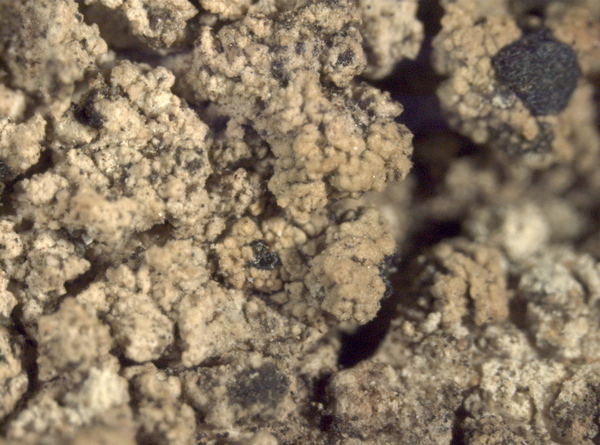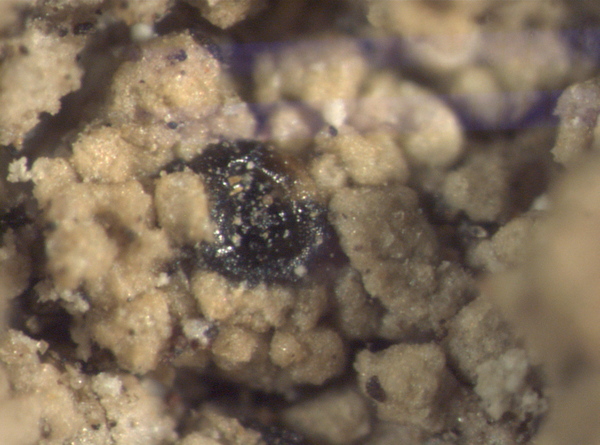Lecidella flavosorediata (Vězda) Hertel & Leuckert
Willdenowia, 5: 374, 1969. Basionym: Lecidea flavosorediata Vězda - Preslia, 33: 366, 1961.
Synonyms: Lecidella elaeochroma var. flavosorediata (Vězda) Clauzade & Cl. Roux
Distribution: N - Ven (Nascimbene & al. 2015), TAA (Nascimbene 2014), Lig (TSB 33039). C - Tosc (Loppi & al. 1994), Sar (Zedda 2002). S - Pugl (Nimis & Tretiach 1999), Cal (Ravera & al. 2022).
Description: Thallus crustose, endo- to episubstratic, greyish white to yellowish white in non-sorediate parts, continuous to areolate, forming up to a few cm wide, regular or irregular patches or mosaics with other lichens, without an evident prothallus. Areoles, when present, mostly marginal, up to 0.1 mm in diam.; soralia conspicuous, yellowish to ochre-coloured, irregular, flat, at first more or less discrete, later becoming confluent and forming a thick, subleprose crust; soredia farinose, 20-30 μm in diam., sometimes gathered into larger consoredia. Apothecia rather rare, lecideine, black, up to 0.8 mm across, with a convex disc and a thin, finally often excluded proper margin. Epithecium blue-violet; hymenium colourless; paraphyses easily made free in K, simple, rarely anastomosing or branched in upper part, not capitate; hypothecium brown. Asci 8-spored, clavate, with an intensely K/I+ blue tholus penetrated by a faintly amyloid, broadly cylindrical axial mass, and a poorly developed ocular chamber, the wall K/I-, surrounded by a K/I+ blue outer layer, approaching the Lecanora-type. Ascospores 1-celled, hyaline, ellipsoid, 10-14 x 6-8 μm. Pycnidia rare, black in upper part. Conidia thread-like, strongly curved, often U-shaped, c. 25 μm long. Photobiont chlorococcoid. Spot tests: thallus K-, C+ orange, KC+ orange, P-, UV-; soralia K-. Chemistry: arthothelin, variable amounts of granulosin.Note: this epiphytic species seems to be most frequent on deciduous trees and Abies in the mountains of Southern Italy. For its chemistry see Knoph & Leuckert (1997).
Growth form: Crustose
Substrata: bark
Photobiont: green algae other than Trentepohlia
Reproductive strategy: mainly asexual, by soredia, or soredia-like structures (e.g. blastidia)
Poorly known taxon in need of further study
Commonnes-rarity: (info)
Alpine belt: absent
Subalpine belt: absent
Oromediterranean belt: absent
Montane belt: very rare
Submediterranean belt: very rare
Padanian area: absent
Humid submediterranean belt: very rare
Humid mediterranean belt: absent
Dry mediterranean belt: absent
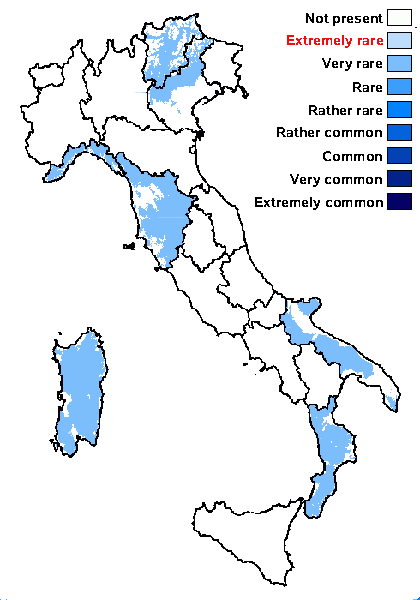
Predictive model
Herbarium samples
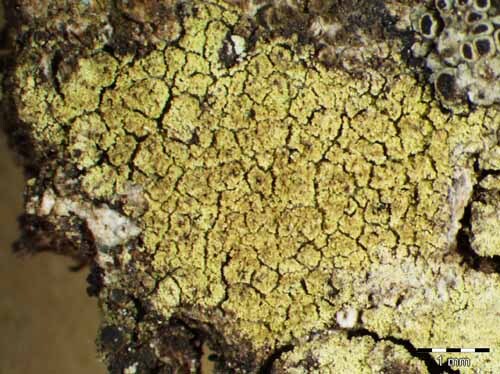
Harrie Sipman – Source http://www.bgbm.fu-berlin.de/sipman/Zschackia/AegeanLichens/CaloplacaAC.htm - As Caloplaca oasis
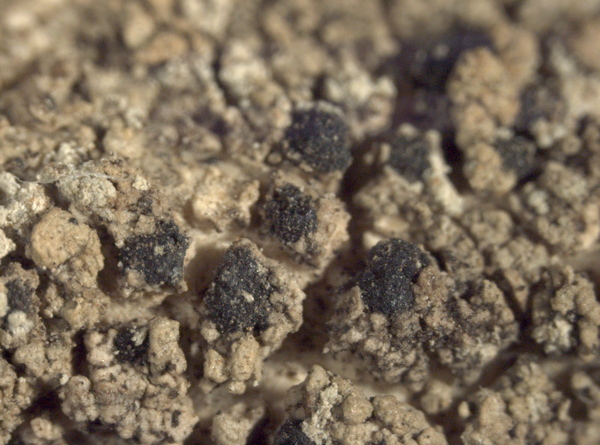

E. Pittao; Owner: Department of Life Sciences, University of Trieste
Herbarium: TSB (TSB 13279)
20.10.2009
Growth form: Crustose
Substrata: bark
Photobiont: green algae other than Trentepohlia
Reproductive strategy: mainly asexual, by soredia, or soredia-like structures (e.g. blastidia)
Poorly known taxon in need of further study
Commonnes-rarity: (info)
Alpine belt: absent
Subalpine belt: absent
Oromediterranean belt: absent
Montane belt: very rare
Submediterranean belt: very rare
Padanian area: absent
Humid submediterranean belt: very rare
Humid mediterranean belt: absent
Dry mediterranean belt: absent

Predictive model
| Herbarium samples |

Harrie Sipman – Source http://www.bgbm.fu-berlin.de/sipman/Zschackia/AegeanLichens/CaloplacaAC.htm - As Caloplaca oasis


 Index Fungorum
Index Fungorum
 GBIF
GBIF
